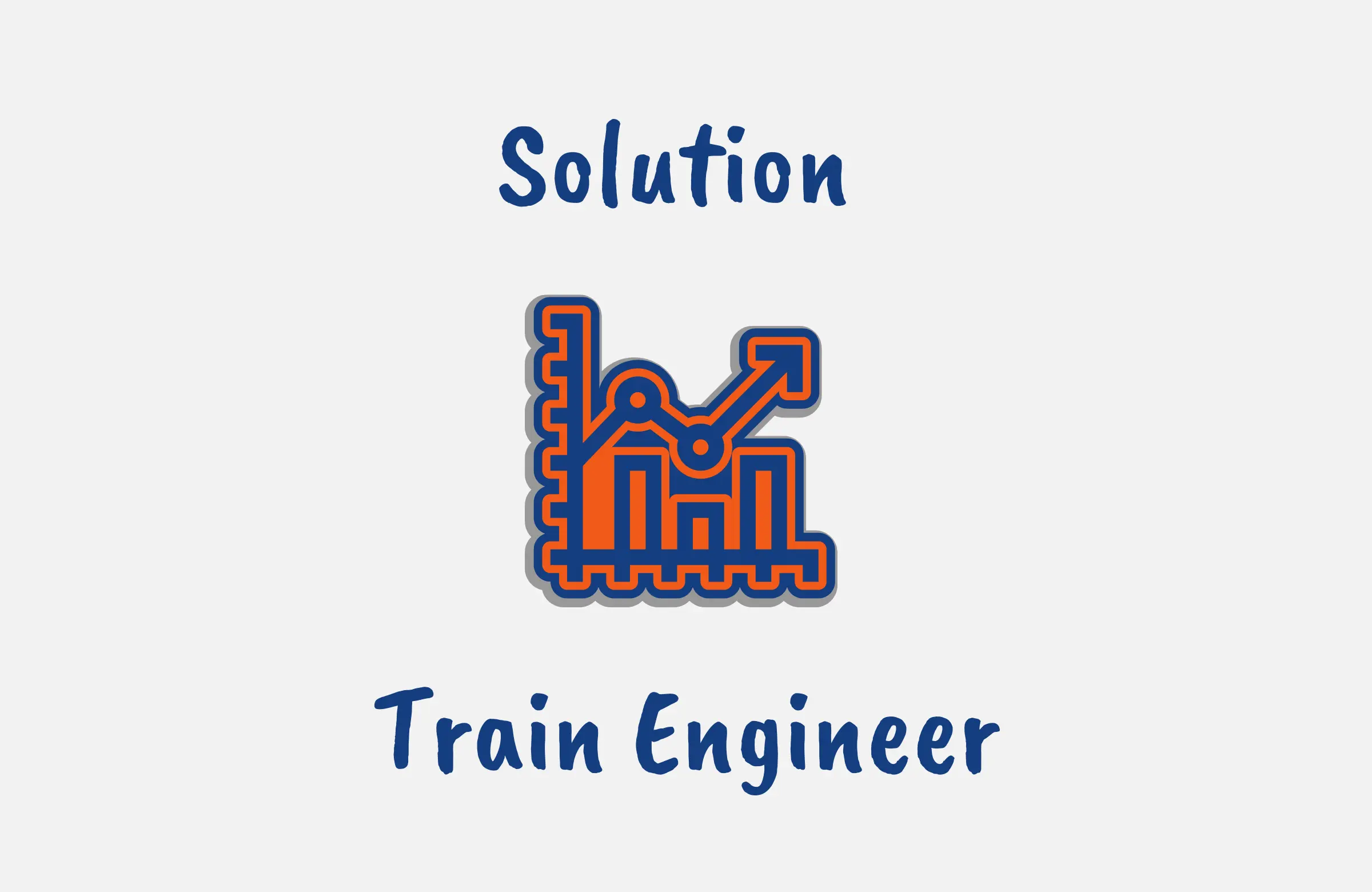The Scaled Agile Framework (SAFe) offers businesses in this digital age an effective strategy to align with the current dynamic pace of change and deliver solutions that meet evolving business and customer needs.
Implementing such solutions demands a robust value creation process, using Solution Trains to foster productive outcomes. This is where the Solution Train Engineer (STE) role becomes indispensable in SAFe.
In this article, we’ll understand what the role of STEs entails, their responsibilities, and how they collaborate with other roles like the Release Train Engineer to guide teams through efficient solution delivery.
What is a Solution Train Engineer?
A Solution Train Engineer (STE) is a key figure who acts as a servant leader and coach of Solution Trains to facilitate and coordinate the development of large solutions.
The Solution Train is used in the Scaled Agile Framework (SAFe) to develop large solutions requiring the coordination of multiple Agile Release Trains (ARTs) and suppliers.
This role oversees value streams and Agile Release Trains (ARTs), working closely with suppliers and stakeholders to execute a shared solution strategy.
An STE manages the end-to-end value stream and ensures a coordination and facilitation network among Release Train Engineers (RTEs).
They guide the solution strategy, aligning and steering teams towards the shortest sustainable lead time and fostering collaboration, and are instrumental in solution strategy execution, shaping the solution vision, and managing the Solution Backlog.
It is a role that involves a careful balance of capacity allocation, gathering of feedback, and the use of both quantitative and qualitative insights for relentless improvement.
They tackle impediments and dependencies, ensuring the strategic alignment of the solution integration and release activities.
With a Lean-Agile mindset, STEs are the backbone of Enterprise Solution Delivery (ESD) competency, embodying values and principles that promote respect, transparency, and a growth mindset.

Solution Train Engineer Job Description
Solution Train Engineers (STEs) support the execution of value streams and Agile Release Trains (ARTs), steering their teams toward the shortest sustainable lead time.
A typical Solution Train Engineer’s job description and responsibilities include the following:
1. Servant Leadership and Coaching
As a servant leader and coach, the STE facilitates and coordinates the development of Large Solutions.
They support the execution of value streams and Agile Release Trains (ARTs), steering their teams towards the shortest sustainable lead time.
2. Management of End-to-End Value Streams
The STE manages end-to-end value streams and a coordination and facilitation network with Release Train Engineers (RTEs) and is responsible for guiding the solution strategy and aligning and reinforcing the solution vision and roadmap.
3. Solution Train Backlog Management
The STE oversees the management of the Solution Train Backlog, a critical role that involves capacity allocation and gathering feedback for relentless improvement.
4. Handling of Impediments and Dependencies
The STE ensures strategic alignment of solution integration and release activities by effectively handling impediments and dependencies in the system.
5. Promotion of Lean-Agile Leadership
As a Lean-Agile leader, the STE fosters a Lean-Agile mindset that values respect, transparency, and alignment.
They champion improvement over traditional behaviors, promoting Lean Systems Engineering practices.
6. Addressing Communication Challenges and Politics:
In the broader landscape of SAFe, STEs serve as trusted advisors who address communication challenges and politics by forging influential relationships to instill a shared purpose across teams.
7. Facilitation of a Flow-Based System
The STE facilitates a flow-based system, managing the actual, end-to-end flow of activities across teams, functions, and organizational boundaries.
8. Monitoring of Delivery System Health
The STE monitors the health of the entire delivery system, employing flow metrics to gauge value delivery and efficiency.
9. Streamlining the Delivery System
The STE addresses delays and supply chain bottlenecks to streamline the delivery system for optimal outcomes.
10. Use of Meaningful Metrics
The STE harnesses meaningful metrics and performance indicators to set improvement targets, following the plan-do-check-adjust cycle.
11. Addressing Impediments and Problems
The STE is expected to make crucial decisions at the right time, providing feedback at appropriate intervals to overcome impediments and problems and drive global improvements.
12. Enterprise Solution Delivery Competency
Ultimately, the STE embodies the Enterprise Solution Delivery competency, delivering value to customers with rapid, continuous delivery.
They continuously assess current strengths and challenges to initiate meaningful improvement activities.

How to Become a Solution Train Engineer
Becoming a Solution Train Engineer (STE) in Scaled Agile Framework (SAFe) entails a journey of growth and continuous learning.
Here’s a step-by-step guide to help you embark on this path:
1. Understand the STE Role
The STE supports the shared solution strategy and manages the end-to-end value stream.
You’ll need to understand how to guide the execution of the solution strategy, collaborating with Release Train Engineers (RTEs), and steering teams towards the shortest sustainable lead time.
2. Master Coordination and Facilitation
An effective STE operates within a coordination and facilitation network, working with suppliers and various stakeholders.
You must learn to facilitate pre-plan strategies and execute solution strategies, aligning and reinforcing the team’s efforts.
3. Gain Knowledge of Essential Tools
You should develop a solid understanding of the solution vision, roadmap, and Solution Train Backlog.
Prioritizing capabilities and managing capacity allocation will be part of your role.
4. Cultivate a Feedback Culture
Commit to fostering a culture of feedback, relentless improvement, and strategic alignment.
Use metrics, quantitative insights, and qualitative insights to guide your team and close information gaps.
5. Foster Lean-Agile Leadership
Embody Lean-Agile Leadership and nurture a Lean-Agile mindset. This involves challenging traditional behaviors, such as siloed decision-making and adherence to fixed plans, and promoting Lean Systems Engineering practices and Continuous Delivery Pipelines.
6. Build Influential Relationships
Cultivate influential relationships across the organizational landscape to manage politics and communication challenges.
As an STE, you’ll serve as a trusted adviser, fostering widespread alignment and a shared purpose.
7. Understand Flow-Based Systems
An STE must comprehend immutable flow properties, manage the actual, end-to-end flow of activities across teams, functions, and organizational boundaries, and employ flow metrics to gauge value delivery.
8. Drive Global Improvements
Use meaningful metrics and performance indicators to drive global improvements and locally optimize your organization’s SAFe practices.
Follow the plan-do-check-adjust cycle to make crucial decisions at the right time and provide feedback at appropriate intervals.
9. Engage in Continuous Improvement
Undertake continuous improvement activities based on the Enterprise Solution Delivery assessment of current strengths and challenges. R
Remember, the journey to becoming an STE is one of constant learning and growth.

Solution Train Engineer Salary
Like any job role, the Solution Train Engineer (STE)’s salary can vary greatly, depending on factors such as the individual’s level of experience, the size and complexity of the organization, and the geographical location.
According to Glassdoor, in the United States in 2024, the estimated total pay for an STE is $155,620 annually with an estimated base pay of $123,536 annually. However, this is just an average estimate, and actual salaries may be higher or lower.
For the most accurate and up-to-date salary information, you should consult current job postings, salary survey websites, or professional networks within the field and location of interest.
Solution Train Engineer vs Release Train Engineer
The Solution Train Engineer (STE) and the Release Train Engineer (RTE) are two key roles in the Scaled Agile Framework (SAFe).
Both serve as servant leaders and coaches within their respective domains, but their responsibilities and scopes differ in several key areas.
1. Scale of Coordination
The RTE facilitates and coordinates activities within a specific ART, managing dependencies and impediments to ensure the rapid, continuous delivery of value to customers.
On the other hand, the STE operates at a larger scale, coordinating multiple ARTs and suppliers within a solution train to ensure alignment with the shared solution strategy.
2. Pre-Plan Strategy
The STE guides the pre-plan strategy for the entire solution, focusing on the solution vision and roadmap.
The RTE, meanwhile, focuses on planning and execution within their specific ART, aligning with the broader solution strategy.
3. Feedback and Improvement
Both roles are committed to relentless improvement, using feedback, metrics, and both quantitative and qualitative insights.
However, the STE looks at the health of the entire delivery system, guiding global improvements, while the RTE focuses on optimizing their specific ART.
4. Lean-Agile Leadership
The RTE and STE both embody Lean-Agile leadership, fostering a Lean-Agile mindset in their teams.
Yet, the STE’s scope extends to coordinating large solutions, necessitating a deeper understanding of Lean Systems Engineering practices and the Enterprise Solution Delivery competency.

Solution Train Engineer vs Project Manager
The roles of a Solution Train Engineer (STE) and Project Manager (PM) are both vital within their respective frameworks, but they diverge in several areas due to the different methodologies they support.
1. Role and Framework
The STE plays a pivotal role in the Scaled Agile Framework (SAFe), acting as a servant leader and coach for multiple Agile Release Trains (ARTs).
Conversely, a PM operates within traditional project management methodologies, overseeing individual projects from initiation to closure.
2. Focus
The STE’s focus is on facilitating and coordinating large solutions, aligning multiple ARTs and suppliers within a solution train to ensure a shared solution strategy.
In contrast, the PM centers on the successful delivery of a single project, managing resources, schedules, and the scope of work.
3. Planning and Execution
The STE guides the pre-plan strategy for the entire solution, emphasizing the solution vision and roadmap.
Meanwhile, the Project Manager is responsible for detailed project planning, risk management, and project execution within a fixed plan.
4. Change Management
The STE fosters a Lean-Agile mindset, endorsing adaptability and continuous improvement, while the PM typically operates within a more rigid, phase-gated delivery model, where changes are managed through formal processes.
5. Leadership Style
As a servant leader, the STE in SAFe works to empower teams, foster collaboration, and reinforce values and principles that promote a culture of transparency and respect.
In contrast, the PM often takes a directive approach, assigning tasks, and monitoring progress towards project goals.
Conclusion
Solution Train Engineers play a vital role in fostering a Lean-Agile mindset within SAFe, guiding Large Solutions, and facilitating value streams across multiple Agile Release Trains (ARTs).
They champion Lean-Agile Leadership, steering solution strategy execution, and managing Solution Train Backlogs.
Through relentless improvement, feedback, and both quantitative and qualitative insights, they unlock value for customers and ensure strategic alignment with stakeholders.
FAQs
What does a Solution Train Engineer do?
A Solution Train Engineer (STE) serves as a servant leader in the Scaled Agile Framework (SAFe), coordinating multiple Agile Release Trains (ARTs) for large solutions. They facilitate alignment with the solution strategy, manage the Solution Train Backlog, and steer strategy execution.
The STE fosters a Lean-Agile mindset, promotes relentless improvement, and uses feedback and insights to deliver value to customers and ensure strategic alignment.
When is the Right Time to Create the Role of the Solution Train Engineer?
The role of the Solution Train Engineer (STE) is typically created when an organization scales its Agile implementation to coordinate multiple Agile Release Trains (ARTs), which are contributing to large solutions.
This occurs when the complexity and size of solutions exceed the capacity of a single ART.





